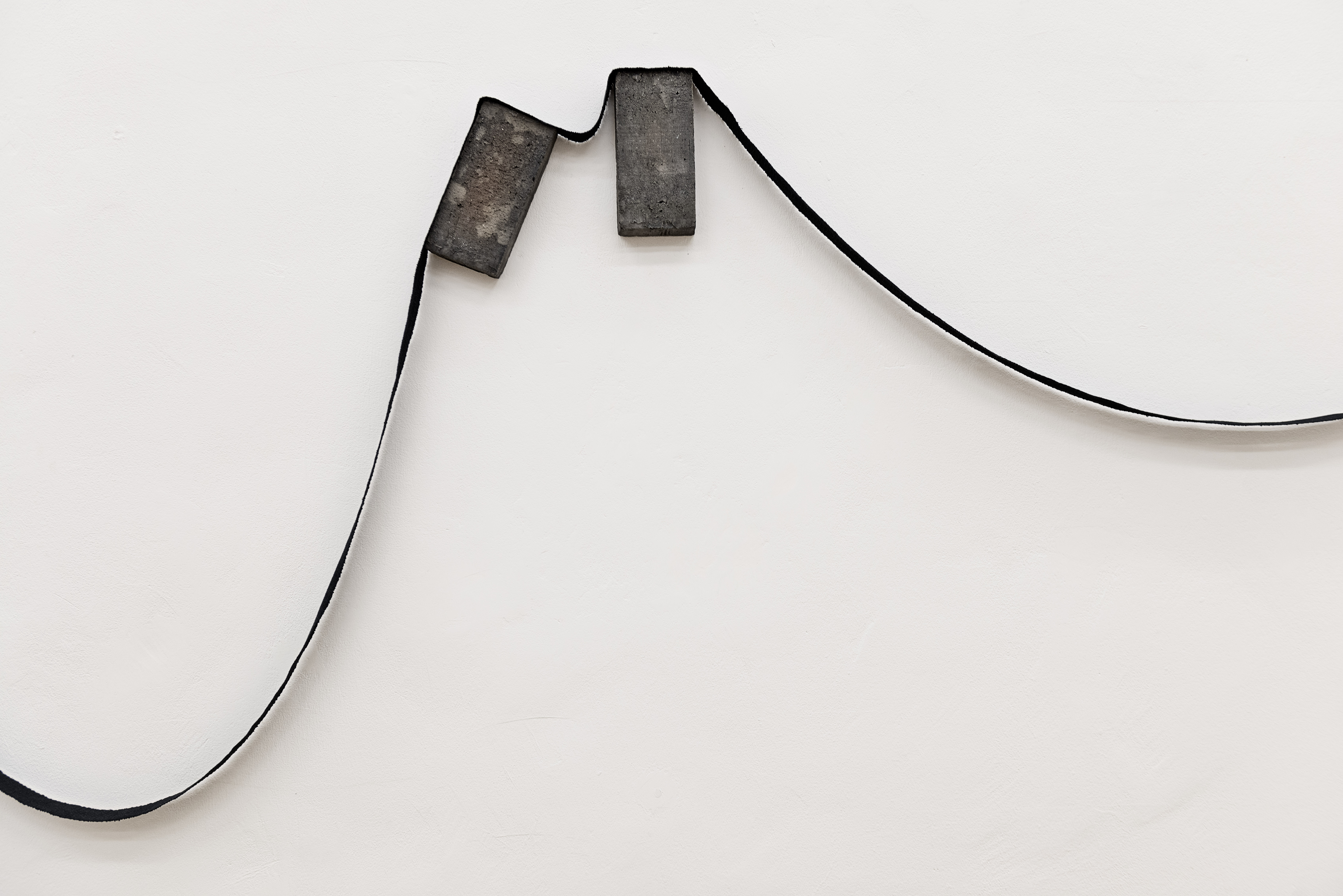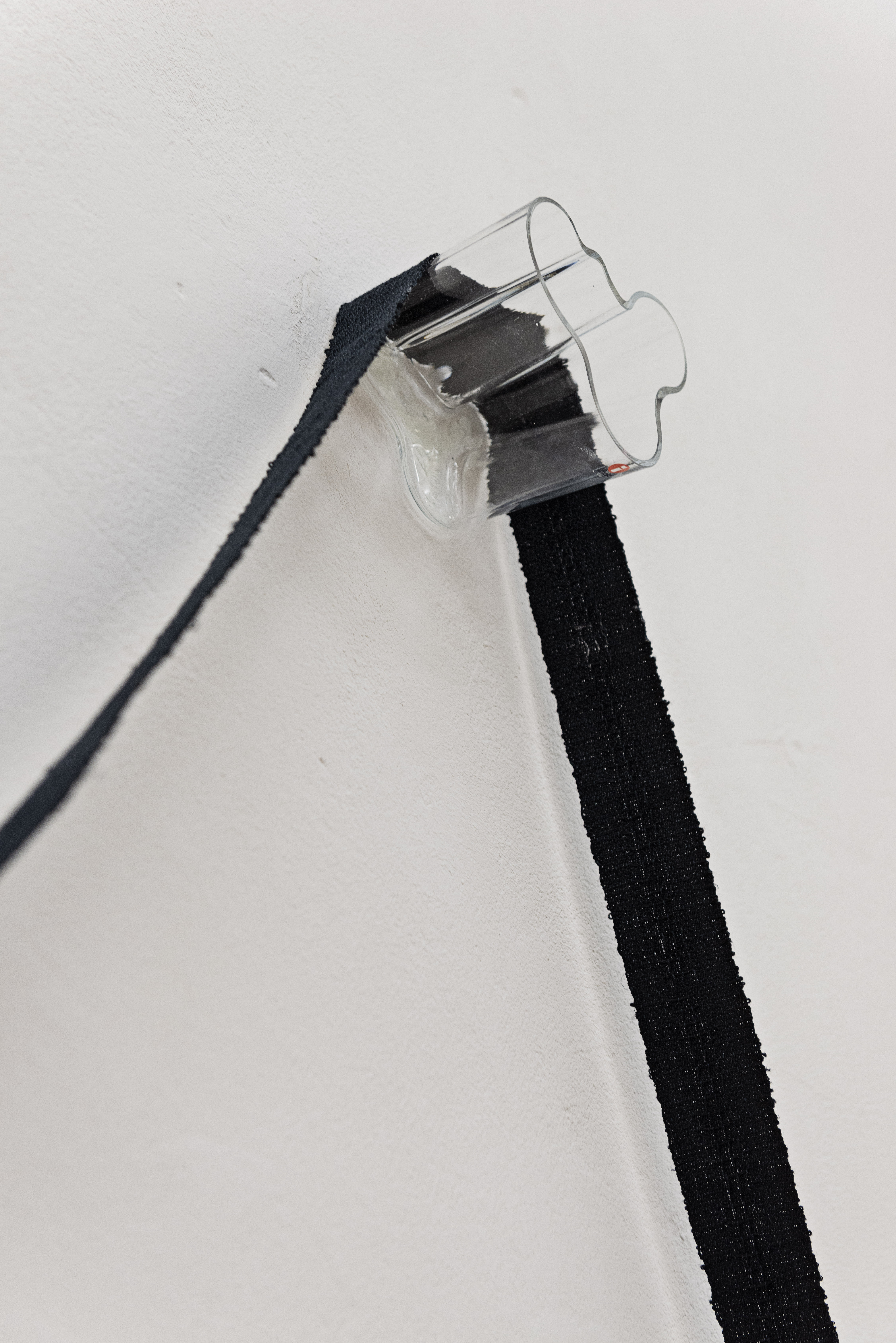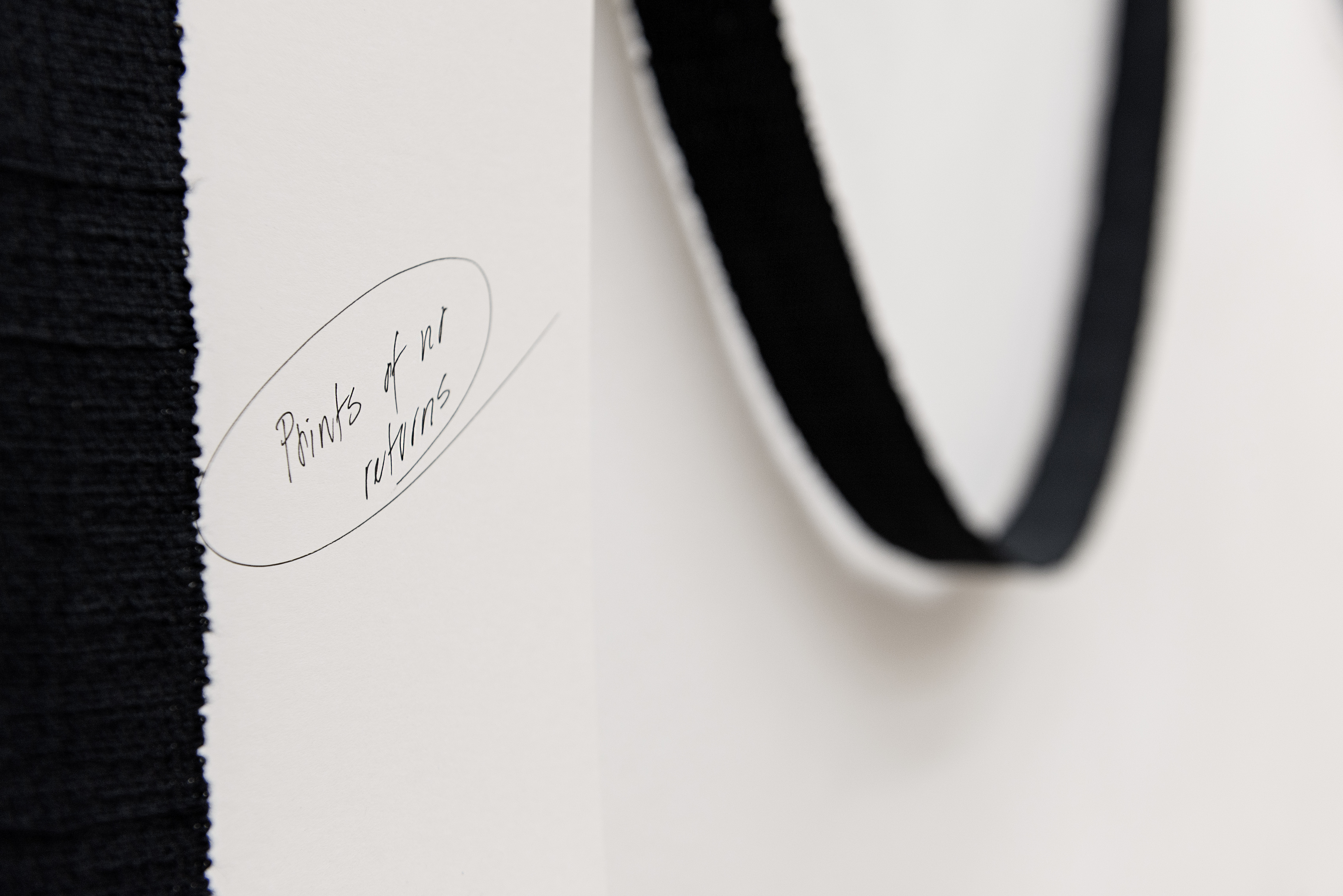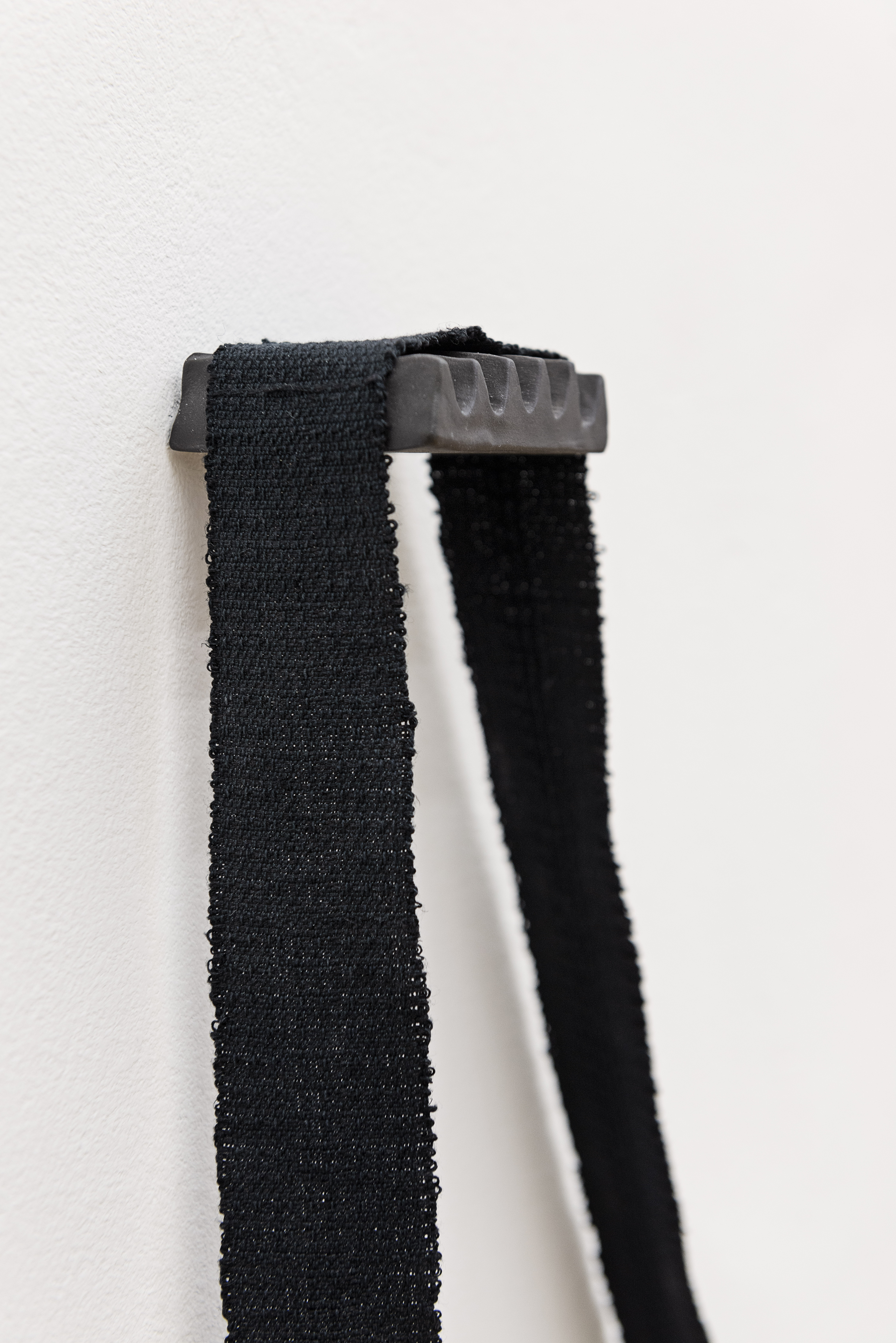Freunde! Seht! Fühlt und seht ihr’s nicht?
Copper, variable dimensions
It is often out of the trivialities of everyday life that dramatic emotions originate. Using the back of a bike and rubbish shed in Odense Harbour as a stage, Thea A. Käszner has created an installation which connects grand emotions with the ordinary. Large drops, bent and shaped in copper, hang seemingly disorganised on the wall. Upon closer inspection, however, a well-known logic emerges between the patinated drops, and the shed suddenly appears to be a musical score, the drops hanging like musical notes. When hit by rain, the individual drop notes are capable of producing a very intimate sound, but together they also make up a specific phrase from ‘Liebestod’, the last act of Richard Wagner’s romantic tragedy Tristan und Isolde. In German, Käszner’s work reads: ‘Freunde! Look! Fühlt und seht ihr’s nicht?’ In English, this translates to: ‘Friends! See! Don’t you feel and see it?’ The dramatic question echoes between the practical shed and the newly developed urban environment of Odense Harbour. The sentence directly addresses the people who live in and use the area on an everyday basis. As a daily, highly dramatic question, the work positions itself between everyday life and the big emotions of the opera – rallying for battle, in a way. But, at the same time, it also extends towards the surrounding waters of Odense Harbour, where the levels will rise, locally as well as globally, silently and unsettlingly. Here, the beautiful desperation in Wagner’s tragedy takes on new meanings, both socially and climate-wise. Between the trivial and the catastrophic. In addition to this climate commentary, the artist, through the work’s cultural-historical reference, points to the entire area – perhaps even all of public space – as a type of stage. An act that articulates the way we, as social beings, perform in public space. The way we see and experience ourselves being seen, as much as we view the world and the people around us.
Texts by Louis Scherfig
Translation by Martha Hviid, copy-edit by Jaclyn Arndt
The programme is established with the support from the Carl Nielsen and Anne Marie Carl-Nielsen Foundation.
Copper, variable dimensions
It is often out of the trivialities of everyday life that dramatic emotions originate. Using the back of a bike and rubbish shed in Odense Harbour as a stage, Thea A. Käszner has created an installation which connects grand emotions with the ordinary. Large drops, bent and shaped in copper, hang seemingly disorganised on the wall. Upon closer inspection, however, a well-known logic emerges between the patinated drops, and the shed suddenly appears to be a musical score, the drops hanging like musical notes. When hit by rain, the individual drop notes are capable of producing a very intimate sound, but together they also make up a specific phrase from ‘Liebestod’, the last act of Richard Wagner’s romantic tragedy Tristan und Isolde. In German, Käszner’s work reads: ‘Freunde! Look! Fühlt und seht ihr’s nicht?’ In English, this translates to: ‘Friends! See! Don’t you feel and see it?’ The dramatic question echoes between the practical shed and the newly developed urban environment of Odense Harbour. The sentence directly addresses the people who live in and use the area on an everyday basis. As a daily, highly dramatic question, the work positions itself between everyday life and the big emotions of the opera – rallying for battle, in a way. But, at the same time, it also extends towards the surrounding waters of Odense Harbour, where the levels will rise, locally as well as globally, silently and unsettlingly. Here, the beautiful desperation in Wagner’s tragedy takes on new meanings, both socially and climate-wise. Between the trivial and the catastrophic. In addition to this climate commentary, the artist, through the work’s cultural-historical reference, points to the entire area – perhaps even all of public space – as a type of stage. An act that articulates the way we, as social beings, perform in public space. The way we see and experience ourselves being seen, as much as we view the world and the people around us.
Texts by Louis Scherfig
Translation by Martha Hviid, copy-edit by Jaclyn Arndt
The programme is established with the support from the Carl Nielsen and Anne Marie Carl-Nielsen Foundation.
2023
![]()
![]()
![]()



Follow me, Please
Serie of 18, 30 x 45 cm
Paper and black ink
Registrations and thoughts on architecture, patterns and time.
Supported by The Danish Institute in Rome
Serie of 18, 30 x 45 cm
Paper and black ink
Registrations and thoughts on architecture, patterns and time.
Supported by The Danish Institute in Rome
2022
![]()
![]()
![]()
![]()
![]()

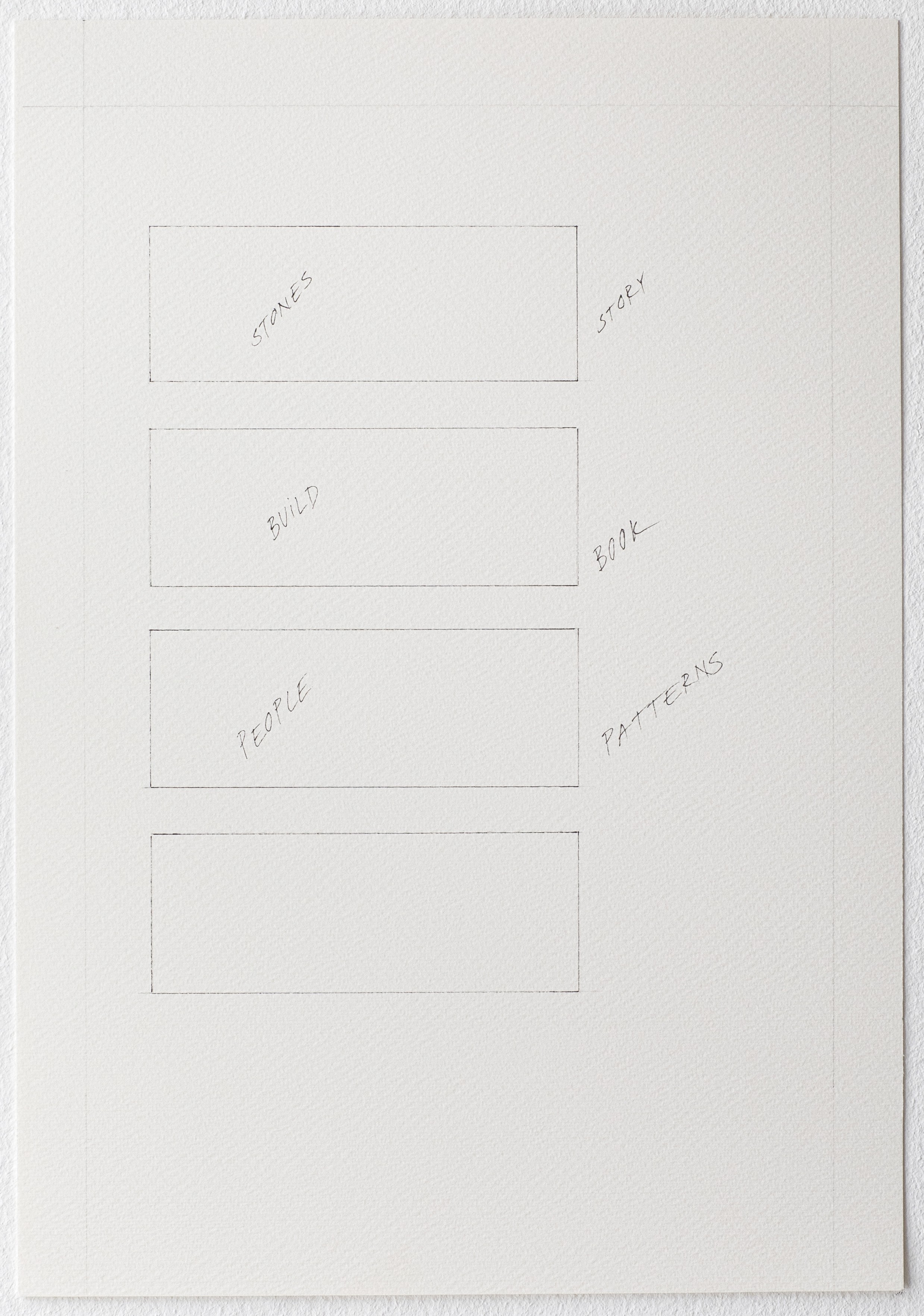



Right and Really?
Screenprinted paper and Oak
Screenprinted paper and Oak
2020
![]()
![]()
![]()



Pretenting to read (Again)
Variable dimensions
stamped wall
Variable dimensions
stamped wall
2020
![]()
![]()
![]()
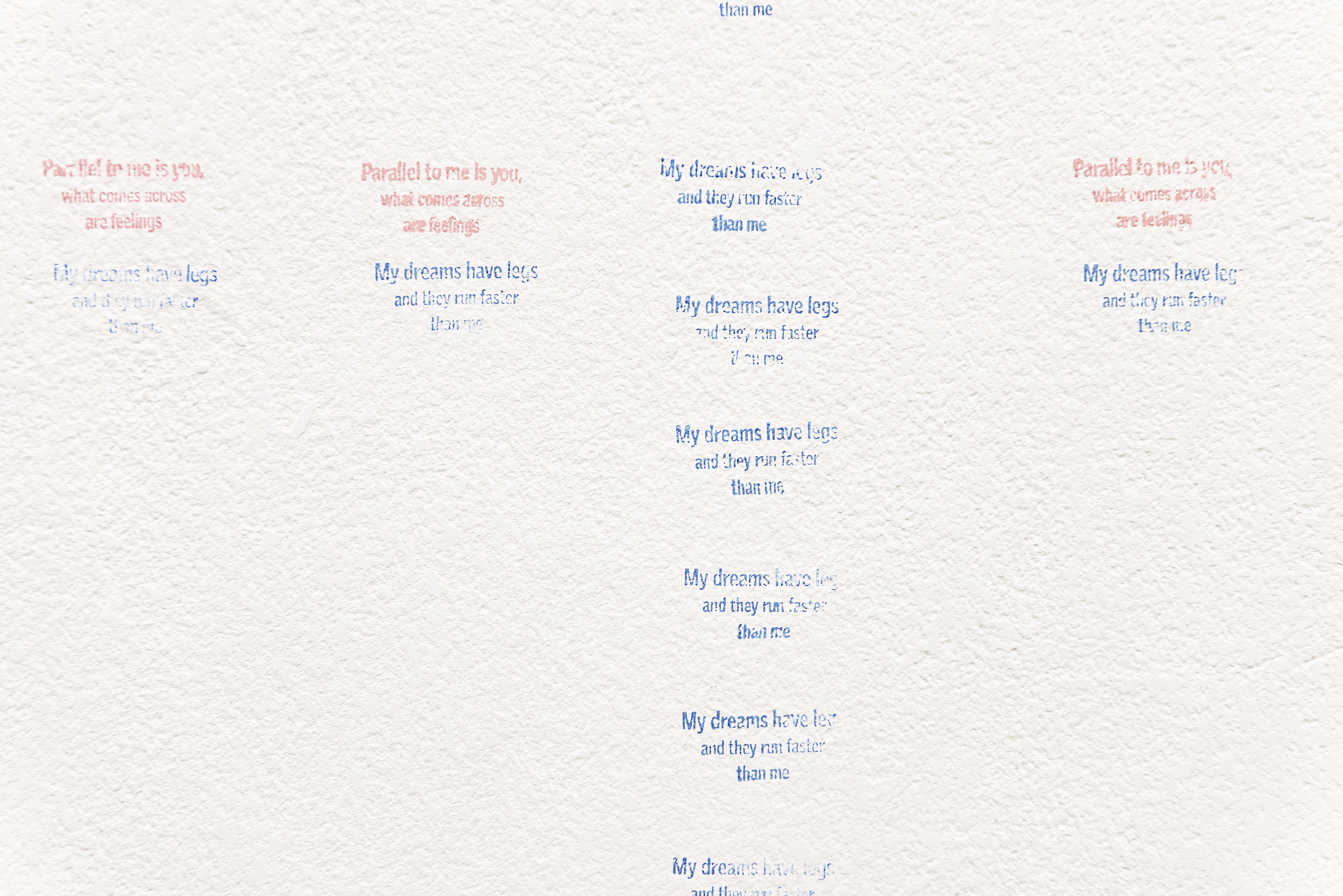

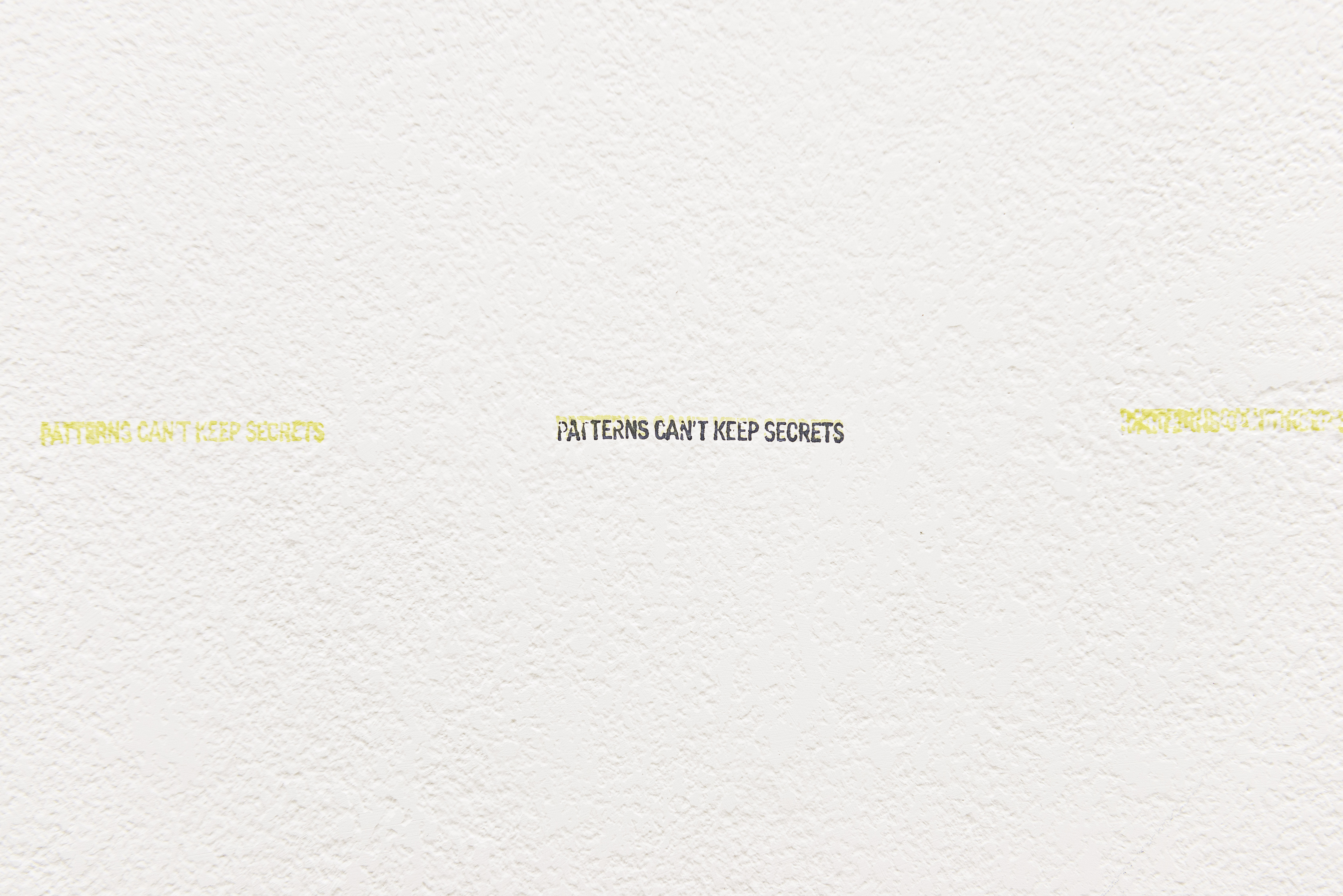
Points of no Returns
White Paper, black Soapholder, black brixstones, Aalvar Alto glas vase, paperclips and 8 meter long handwowen silk and linn
White Paper, black Soapholder, black brixstones, Aalvar Alto glas vase, paperclips and 8 meter long handwowen silk and linn
2020
![]()
![]()
![]()
![]()
![]()
![]()
